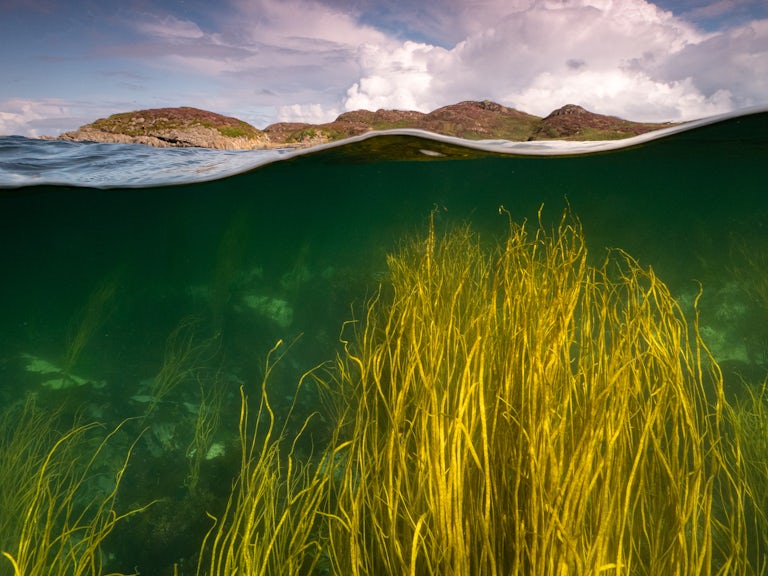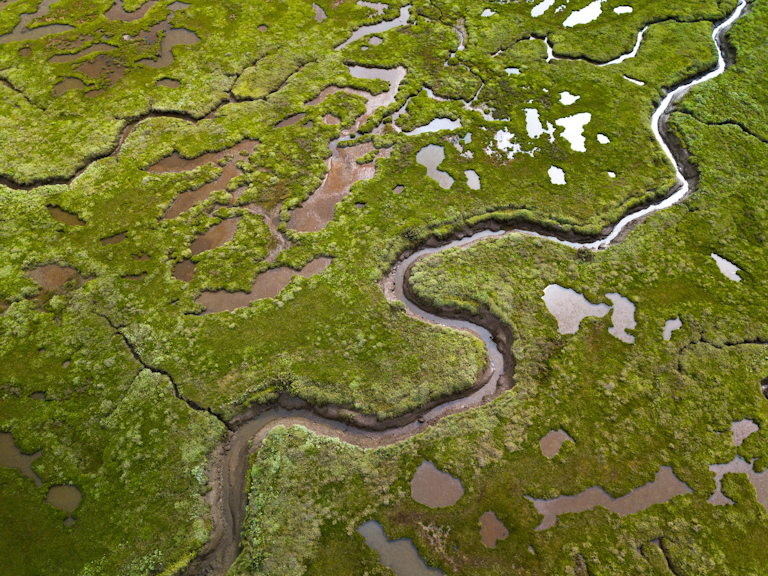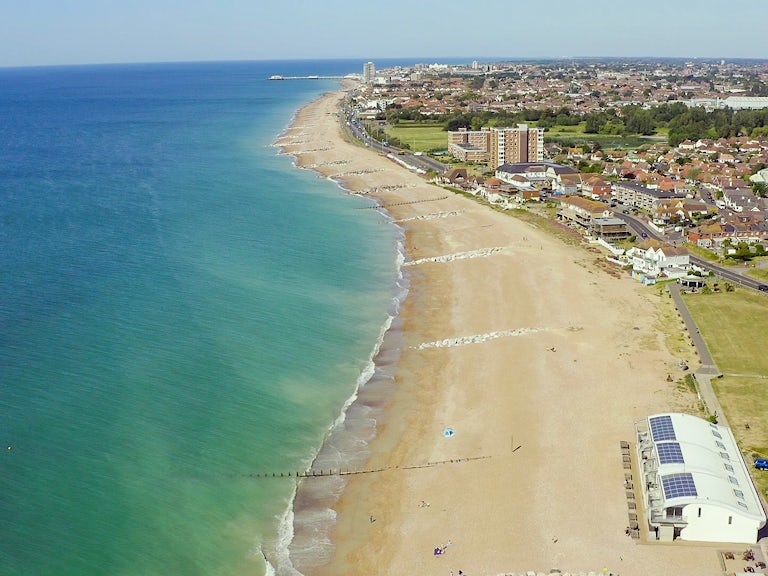Seagrass
Zostera marina and Zostera noltii
Unique aquatic plants that serve as one of our best allies in addressing climate change.
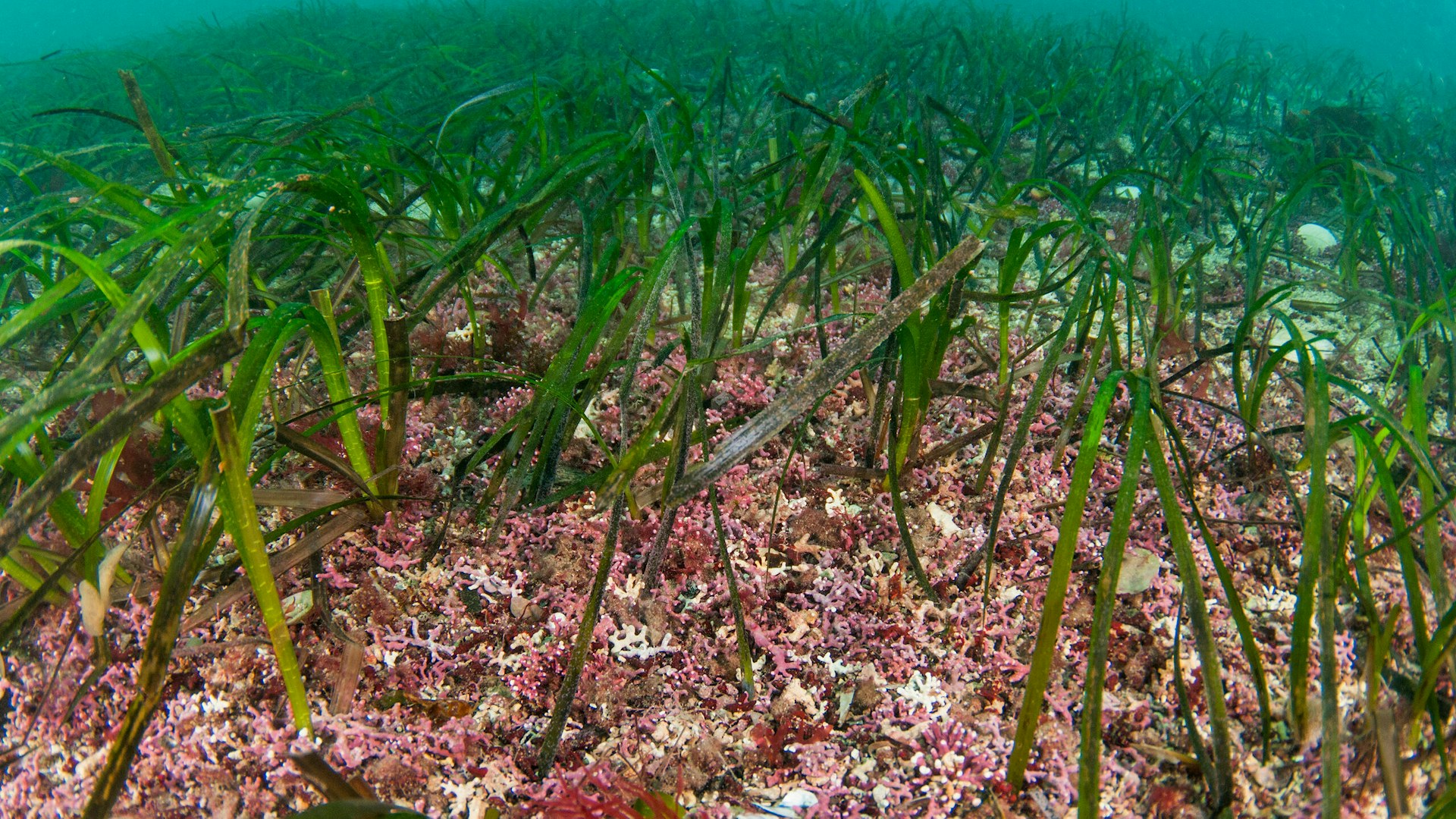
Welcome to our page dedicated to the fascinating genus Zostera, encompassing a group of seagrass that includes two native species: Zostera marina and Zostera noltii. Commonly known as eelgrass, these two species are capable of thriving in the coastal waters of Britain.
Before we delve deeper, it’s important to clarify that “seagrass” is a common name given to various species, including a couple of other plants. However, it is typically used as a collective term for both species of Zostera. On this page, we will refer to the two native species of Zostera as “seagrass”. These two natives, accompanied by two species of tasselweed, play a vital role in our coastal ecosystems.
How it shapes the landscape
By anchoring itself with its root/rhizome system in the seafloor, seagrass stabilises the sediment in which it grows, preventing erosion. Its long leaves slow down water currents and trap sediments, excessive nutrients and chemicals, leading to improved water quality. Additionally, seagrass aids in mitigating damage from rising sea levels and protects shorelines from erosion by reducing wave energy. It oxygenates the water and contributes to combating climate change by storing carbon in the seafloor.
A variety of animals depend on seagrass for shelter, including fish, shellfish, crustaceans and sea anemones. Seagrass meadows shelter both juvenile and adult fish, including pollack, cuttlefish and seahorses. Even life above water benefits from the presence of seagrass, since these meadows provide an important source of food for waterfowl such as wigeons and brent geese. Finally, seagrass filters out microbial contaminants from the water, leading to decreased exposure to bacterial pathogens for fish, humans and invertebrates.
Where it likes to be
Zostera seagrass species are typically found in sheltered, shallow waters, primarily on sandy seabeds. In Britain, they can grow anywhere that meets these requirements. Since they need adequate light for photosynthesis, their growth is limited to a maximum depth of 10 metres. However, the two native Zostera species have different preferences.
How much space they need
A remarkable feature of seagrass is its capacity to establish ideal environments that attract pollinators like crustaceans. This fosters their reproduction and facilitates their expansion across extensive areas spanning tens of thousands of hectares.
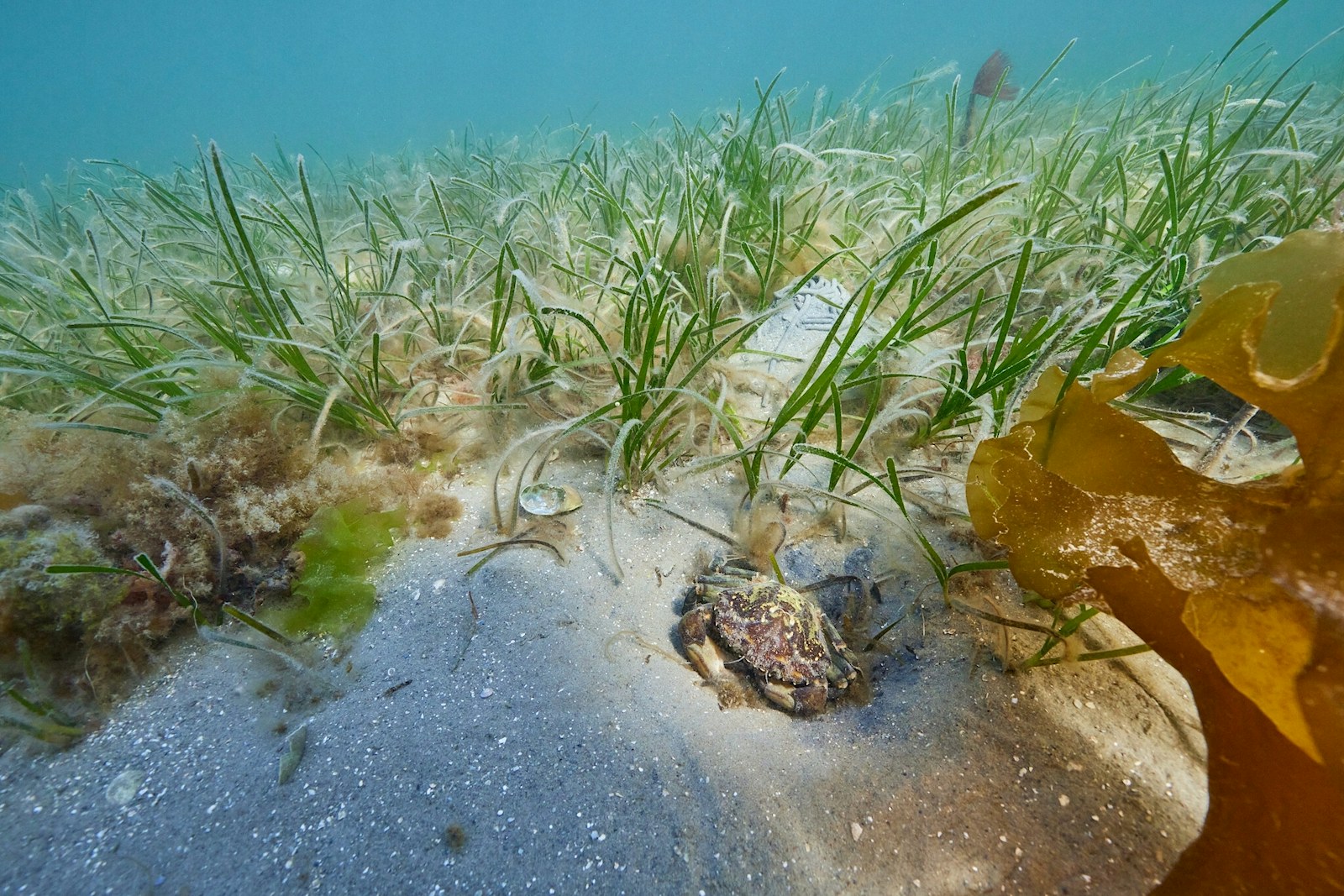
DID YOU KNOW?
Their leaves stay upright in the water thanks to internal air pockets.
BACKGROUND STORY
Once widespread, seagrass meadows in the UK have shrunk by up to 90%. A significant decline in seagrass populations over the last three decades has primarily been attributed to habitat destruction, pollution and other factors. Additionally, a wasting disease caused significant die-offs in the 1930s and continues to affect seagrass populations today.
Seagrass is affected by human activities in various ways. Bottom trawling fishing gear and coastal development can physically damage the meadows. Development can also alter the conditions that seagrass needs to stay healthy and abundant, for example by making the surrounding water more silty. The discharge of sewage and the leaching of fertilisers and herbicides into our seas provide extra nutrients for algae to grow on the surface of seagrass leaves, thereby preventing efficient photosynthesis. Heavy metal pollution can also hinder the growth of plants like seagrass, making them less resilient and slower-growing. In a final blow, alien seagrass species which we have accidentally introduced to Britain are out-competing our native ones.
SPECIAL POWER
Healthy seagrass meadows have a remarkable ability to sequester carbon. These blue carbon ecosystems can become key players in mitigating climate change, capturing and locking away carbon whilst protecting our coasts from increased storms and floods.
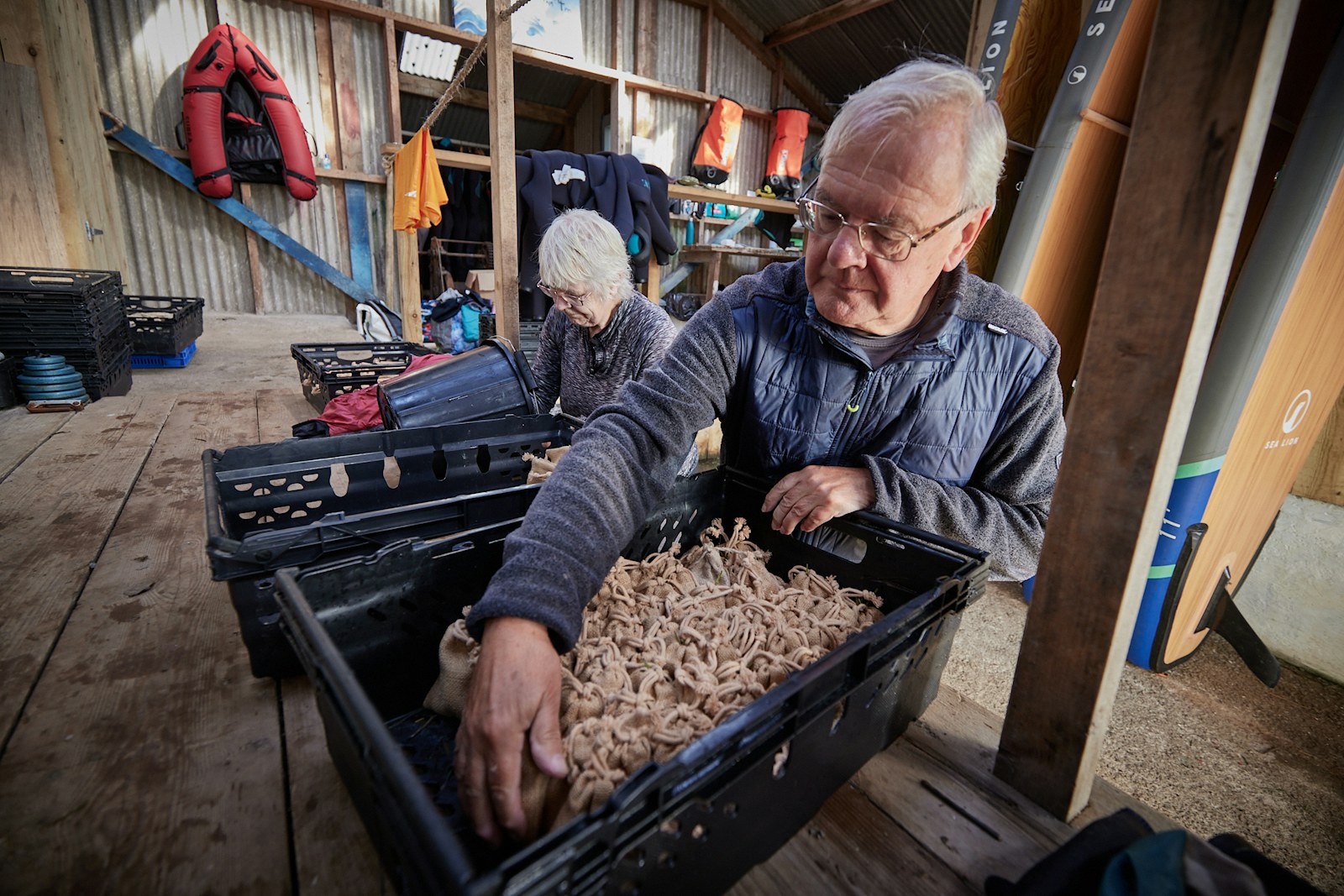
CAN WE HAVE THEM IN BRITAIN?
Healthy seagrass meadows are still found in a few places on the northeast and southwest coasts of England, including near Lindisfarne, Studland Bay and Devon, on the coast of Wales and the west coast of Scotland extending up to the Northern Isles. But, their historical range in Britain is considerably larger. Assisting seagrass to return to its former range may require more than merely ceasing to damage their coastline homes. Once a meadow is gone, changed environmental conditions can make it difficult for the plants to re-establish themselves on their own.
That’s why efforts are ongoing nationwide to restore seagrass meadows. Within the Rewilding Network, diverse seagrass restoration endeavours, such as the projects led by Seawilding and the Community of Arran Seabed Trust (COAST), aim to expand the distribution of seagrass throughout Britain. We have also helped fund several seagrass projects through our Innovation Fund. Such initiatives are now more important than ever and not just because they promote biodiversity. Seagrass is crucial in fighting climate change because it stores carbon and helps counteract ocean acidification by adding oxygen to the water.
IN SUMMARY
Needs shallow, clear water to grow
Once widespread across Britain
A true ecosystem engineer that stabilises the seabed
Creates habitat for various species
An important ally in our fight against climate change
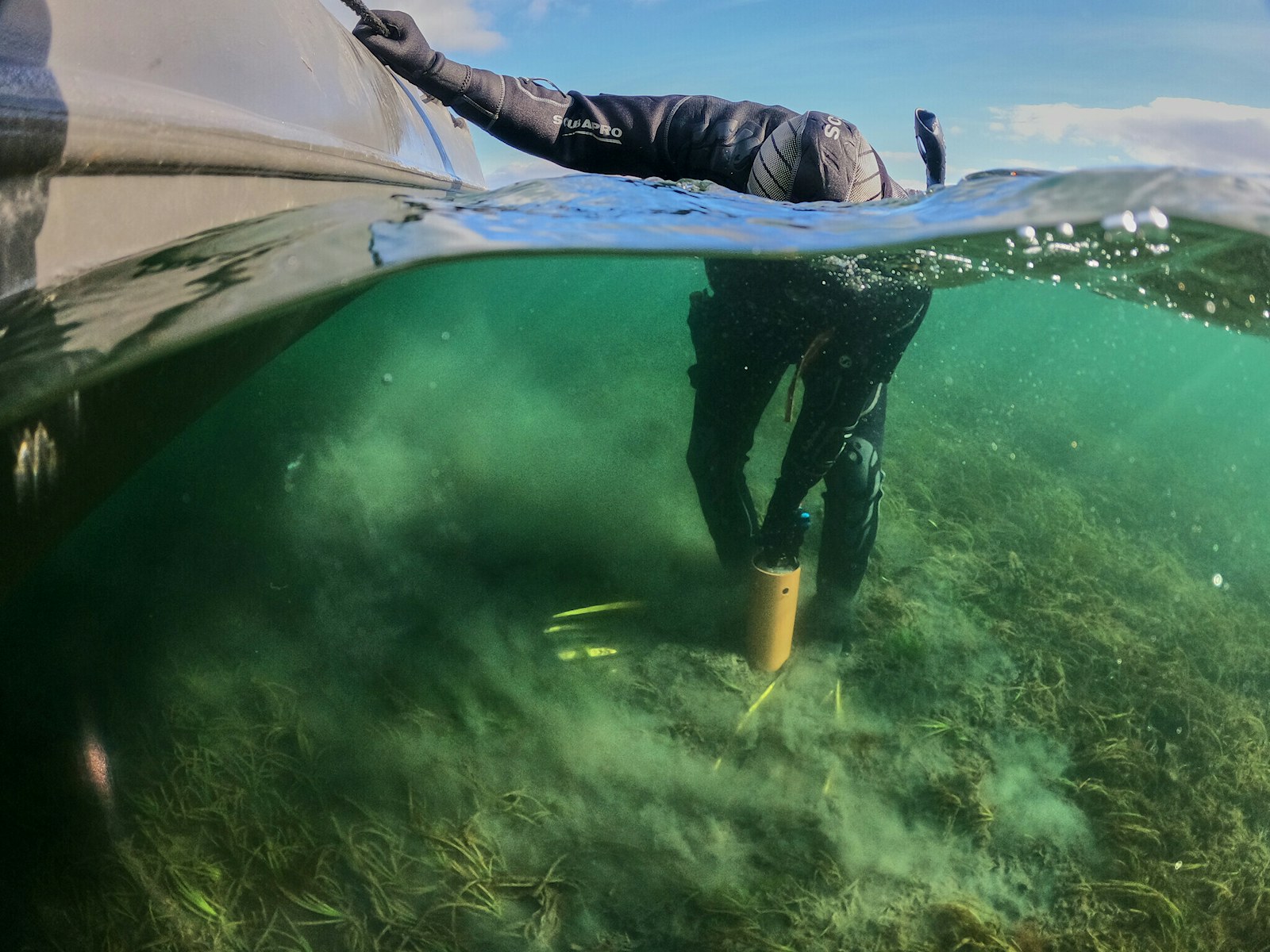
Rewilding in action
Species such as seagrass play a vital role in many ecosystems across Britain.
Find out about the projects putting rewilding into action through restoring seagrass meadows by searching the Rewilding Network map using the species filter.

Rewild your inbox
Wise up with the latest rewilding news, tips and events in our newsletter.
Sign up now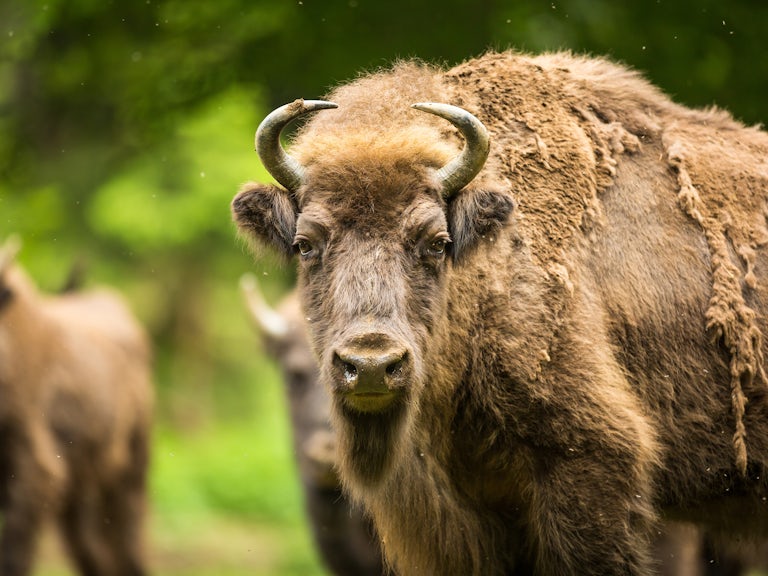
Donate
Nature and climate are in crisis. Rewilding brings hope. Be part of the solution.
Make a donation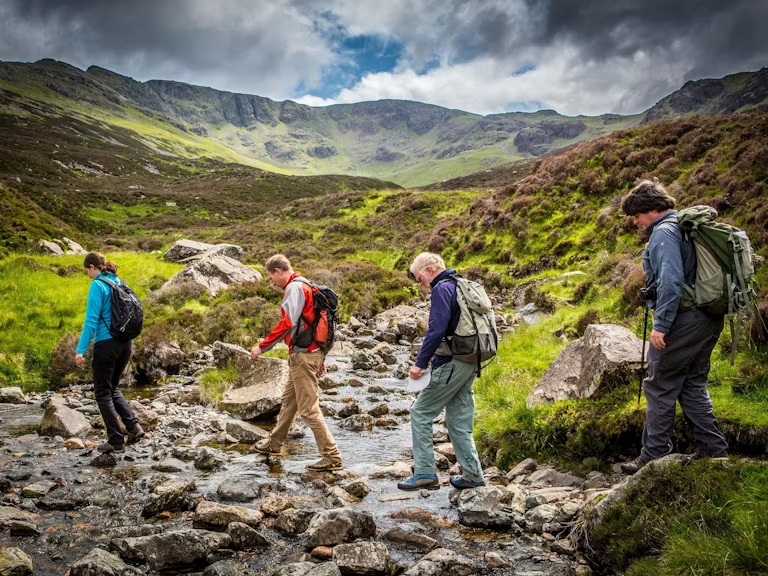
Visit a rewilding project
See rewilding in action at Rewilding Network member projects.
Plan a wild day out